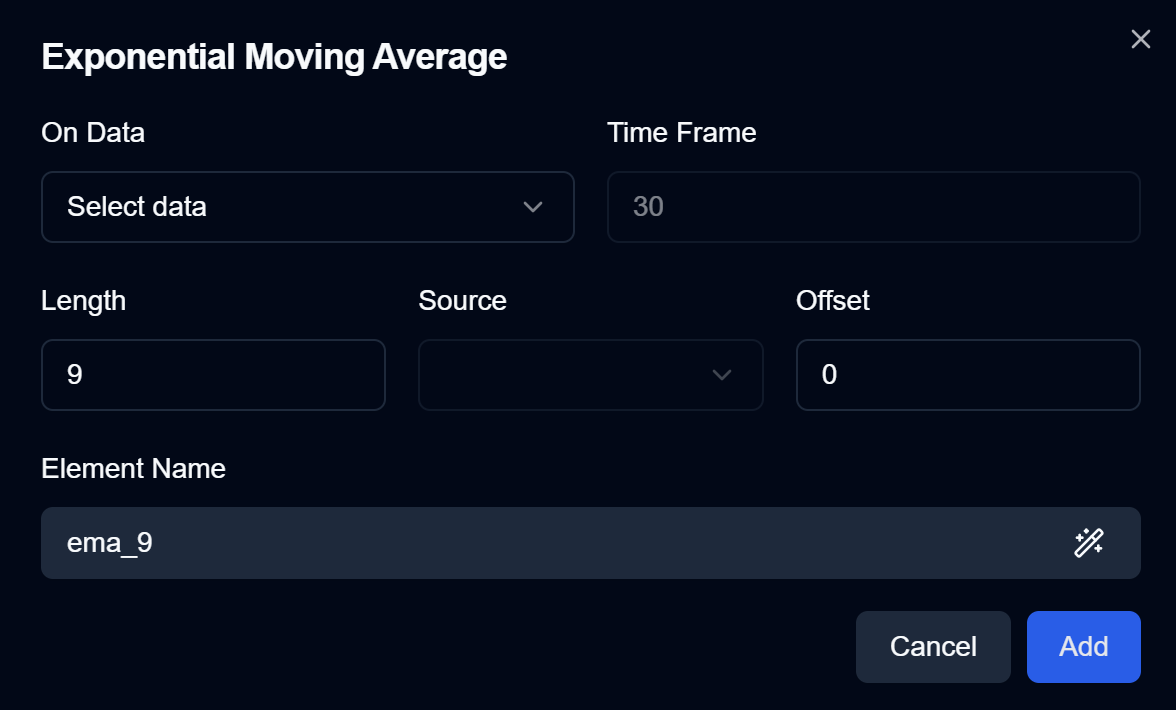Simple Moving Average (SMA)
What is SMA?
The Simple Moving Average (SMA) is a widely used technical indicator that calculates the arithmetic mean of past prices over a defined period.
Unlike the Exponential Moving Average (EMA), SMA gives equal weight to all data points in the period.
How to Add an SMA Indicator?
- Click on the "+" button in the Indicators section.
- Select Simple Moving Average (SMA).
- Choose the data point to apply SMA on.
- Configure the Length, Source, Time Frame, and Offset.
- Click "Add" to save the indicator.

Configurable Parameters in SMA
1. On Data (Source Selection)
- SMA requires at least one column of data to perform calculations.
- If the selected Candle Data has multiple columns (OHLC), users must specify the Source (e.g., Open, High, Low, Close).
- If no source is selected, Close Price is used by default.
2. Time Frame
- Defines the timeframe of the data used for SMA calculations.
- Example: If set to 30, the SMA will be calculated based on 30-minute candle data.
3. Length
- Determines the number of periods used for the SMA calculation.
- Example: If set to 9, the SMA will be calculated based on the last 9 candles.
4. Offset
- Allows shifting the SMA forward or backward in time.
- A positive offset moves SMA forward, while a negative offset moves it backward.
Applying SMA on Other Indicators
Users can apply SMA not only on price data but also on other indicators.
If an RSI (Relative Strength Index) is added to a strategy,
users can apply an SMA on the RSI values to smooth out volatility.
Element Name
Each SMA indicator is assigned a unique Element Name, which can be renamed for better organization.
Users should rename the Element Name if multiple SMAs are used in the same strategy.
Use Cases for SMA
- Trend Following Strategies
→ Use SMA to identify bullish/bearish trends. - Crossover Strategies
→ Use SMA crossovers (e.g., 50 SMA crossing above 200 SMA) to generate trade signals. - Volatility-Based Trading
→ Apply SMA to smooth highly volatile data points.
Ensure that the correct source column is selected if applying SMA on multi-column data.
Next Steps
✅ Add SMA to your strategy
✅ Apply SMA to Candle Data or other Indicators
✅ Use SMA crossovers in Conditions & Actions